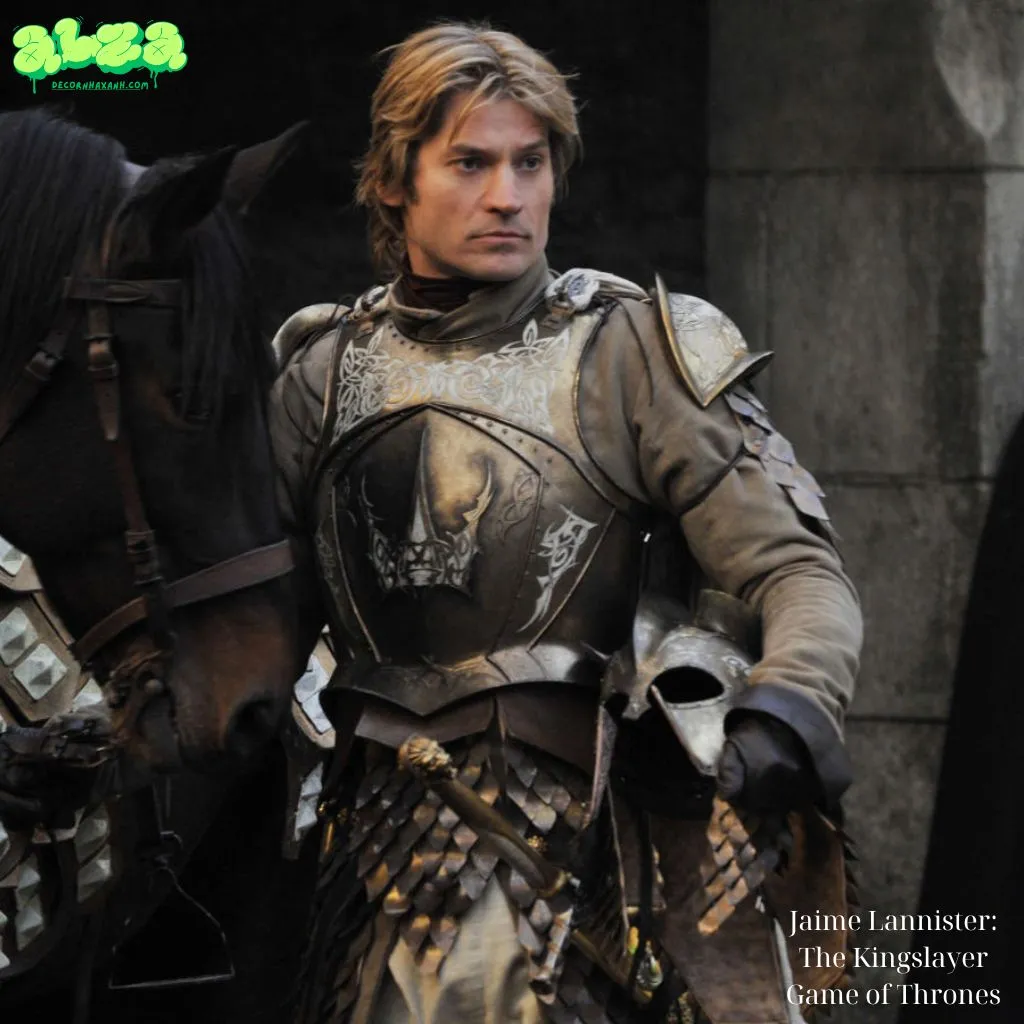Hungry Crab
Published on December 1, 2024

Jaime Lannister, often referred to as the Kingslayer, is one of the most complex and intriguing characters in George R.R. Martin’s “A Song of Ice and Fire” series and its television adaptation, “Game of Thrones.” His character arc is marked by profound transformation, moral ambiguity, and a quest for redemption. This essay explores Jaime Lannister’s journey, his pivotal moments, and the themes that define his role in the epic saga.

Jaime Lannister: The Kingslayer Game of Thrones
Jaime Lannister, born into the wealthy and powerful House Lannister, is introduced as the epitome of knightly prowess and nobility. His skills as a swordsman are unmatched, earning him a place in the Kingsguard at a young age. However, his reputation is forever tarnished by a single act: the murder of King Aerys II Targaryen during Robert’s Rebellion. This act, though it saved countless lives from the Mad King’s wildfire plot, brands Jaime with the derisive nickname “Kingslayer.”
The stigma of being a kingslayer haunts Jaime throughout his life. Despite the justifications for his actions, he is seen as dishonorable by many, including his own family. This perception is exacerbated by his incestuous relationship with his sister, Cersei Lannister, which further complicates his moral standing and public image.
Jaime’s relationship with Cersei is a cornerstone of his character. Their bond is intense, passionate, and ultimately destructive. Cersei’s manipulative and ambitious nature often drags Jaime into morally dubious situations. Despite his deep love for her, Jaime gradually begins to see the toxic influence she has on him and the lengths she will go to for power.
This relationship is pivotal in Jaime’s development. His loyalty to Cersei is unwavering for much of the series, but as he grows and evolves, he starts to question her motives and their shared actions. This inner conflict is crucial in understanding Jaime’s journey from a seemingly one-dimensional villain to a deeply conflicted and sympathetic character.
One of the most significant turning points in Jaime’s arc is his captivity by the Stark forces, specifically under the watch of Brienne of Tarth. During their time together, Jaime undergoes profound changes. Stripped of his title, wealth, and even his sword hand, he is forced to confront his own vulnerabilities and reassess his identity.
The loss of his hand, a symbol of his strength and prowess, is a humbling experience for Jaime. It strips away the superficial layers of his character, revealing a more introspective and reflective individual. His interactions with Brienne challenge his preconceived notions of honor and loyalty, and through her, he begins to understand the true meaning of these virtues.
Jaime’s journey towards redemption is fraught with challenges and setbacks. His relationship with Brienne becomes a catalyst for his transformation. Through her unwavering sense of duty and honor, Jaime is inspired to seek a better path. This is exemplified when he returns to King’s Landing to save the city from Cersei’s destructive plans, risking his own life in the process.
Another key moment in Jaime’s redemption arc is his decision to leave Cersei and join the fight against the Night King and his army. This decision marks a significant break from his past, as he chooses to align himself with a cause greater than his personal desires and family loyalty. It is a testament to his growth and his desire to atone for his past actions.
Jaime’s role in the final battle against the Night King is crucial. He fights valiantly alongside the forces of the living, demonstrating his commitment to the greater good. His actions in this battle, and his willingness to stand alongside former enemies, highlight the extent of his transformation.
However, Jaime’s story takes a tragic turn as he returns to King’s Landing to be with Cersei in her final moments. Despite his growth and his attempts at redemption, his love for Cersei remains a defining aspect of his character. Their deaths, buried together under the rubble of the Red Keep, symbolize the inescapable bond they shared and the tragic nature of their relationship.
Jaime Lannister’s legacy is a complex one. He is remembered as both a hero and a villain, a man who committed heinous acts but also sought to atone for them. His journey is a reflection of the themes of redemption, honor, and the grey areas of morality that are central to “Game of Thrones.”
Jaime’s character arc embodies several key themes of “Game of Thrones.” One of the most prominent is the concept of redemption. Jaime’s quest to redefine his legacy and make amends for his past is a powerful narrative of personal growth and transformation. His journey challenges the notion of static morality, illustrating that people can change and seek forgiveness for their actions.
Another significant theme is the duality of honor and reputation. Jaime’s actions are often misinterpreted or judged without understanding the full context. His struggle to reconcile his sense of honor with the dishonor imposed upon him by society highlights the complexity of moral judgments and the importance of perspective.
Finally, Jaime’s story underscores the destructive nature of toxic relationships. His bond with Cersei, though rooted in deep love, ultimately leads to their mutual downfall. This relationship serves as a cautionary tale about the dangers of unchecked ambition and the sacrifices one makes for love.
Jaime Lannister, the Kingslayer, is one of the most richly developed characters in “Game of Thrones.” His journey from a reviled knight to a redeemed hero is a testament to the series’ exploration of complex moral landscapes and character development. Through his struggles, losses, and moments of bravery, Jaime Lannister leaves an indelible mark on the story of Westeros. His legacy is a reminder that redemption is possible, honor is multifaceted, and love, though powerful, can also be profoundly destructive.